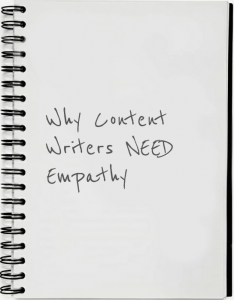Updated August 2019
Anyone who works in content marketing is used to encountering bad examples. You get better at noticing the stuff that doesn’t work when it’s your job to make stuff that does. Because we’re so used to seeing bad examples, it feels really good to encounter examples of content marketing writing done right.
It can give us some inspiration in our work and, if we’re the target audience, be directly useful to us as well. To provide some of you with that feeling today, I’ve collected a few examples of great content marketing writing I’ve encountered. Enjoy.
Great Business Blogging Examples
For most companies that do content marketing, blogging is the biggest part of the job. Blogs give you the opportunity to provide fresh, useful content to your audience on a regular basis and they’re one of the best tools you’ve got for SEO.
But they’re also hungry beasts that demand a lot of work and never let you take a break. That’s caused far too many businesses to try to settle for lazy, cheap content on their blogs – or give up on them entirely within a few months of not seeing immediate results.
The brands that stick with it and provide consistently helpful and high-quality content are therefore in the minority.
HomeAdvisor
Homeowners tend to have a lot of ideas for projects they want to try and questions about how to handle everyday fixes. The Home Advisor blog HomeSource is packed full of answers and tips. The blog is a mix of practical tips like how to hire a good contractor or pack for a move, along with more fun topics like decorating your home and yard.
Probably the most common questions homeowners have are those about cost. Many people – especially new homeowners – simply don’t know what’s it’s normal to expect a home repair or update to cost.
In addition to the blog itself, HomeAdvisor therefore offers a True Cost guide to give you an idea of what your budget should be before you start a project, and help you rule out any contractors that charge outside of the norm. And since the company’s business model is based on matching homeowners with the people who do those sorts of projects, they of course offer a handy CTA on the same page to help you find relevant professionals in your area.

Rover
Rover’s got a bit of advantage over most businesses when it comes to their content. The company is all about pets (mostly dogs) – and we all know pet pictures are one of the most popular things on the internet. But in addition to taking advantage of the love people have for pictures of cute animals, the Rover blog The Dog People also provides a lot of useful information on topics important to pet owners, such as training and safety tips and answers to pressing questions like “do dogs recognize us on a phone screen?” (if you have a dog, you’ve probably wondered).

They’re one of the companies that can most successfully get me to click on a link in an email, because they do a great job of figuring out the things pet owners really do want to know.
Ehrlich
If you’re thinking “sure, their content’s good, but Rover has it so much easier than those of us doing marketing in areas less compelling than the cute dog industry,” here’s an example for you. The pest control company Ehrlich has a great blog, deBugged that provides lots of useful information about bugs and other creepy crawly-adjacent subjects.
Bugs aren’t a subject most of us go out of our way to do some reading on each day, but when you need to know how concerned you should really be about Zika virus or what to do about bed bugs, those posts will come in handy. And the rest of the time, you may find posts on topics like how long wasps live to be interesting as well. Like Home Advisor, they include CTAs at the end of their content where relevant so that person trying to figure out what to do about bed bugs knows who to call to help.

Great Examples of Longform Content
As content marketing is adopted by more and more businesses in all sorts of industries, finding a way to stand out is a challenge. One route many businesses are taking is creating content that goes really in depth. It takes more work, but if you can pack more of the information your prospects need into one longform piece rather than spreading it over a number of shorter pieces, many people will find that more helpful.
BigCommerce
The ecommerce industry has a low barrier to entry—starting an online business costs a lot less than building one with a storefront. But that doesn’t mean becoming an ecommerce entrepreneur is easy. New online business owners have a lot to learn if they’re going to get it right and stay afloat.
The BigCommerce blog includes its share of shorter pieces, but where it really stands out is with the long, comprehensive guides. A lot of websites publish blog posts claiming to be “The Complete Guide to” something, but BigCommerce backs those claims up with meaty posts that pack in a lot of useful advice, paired with examples of that advice in action.
One example of this, the Complete Guide to Ecommerce Personalization comes in at nearly 7,000 words. It covers the types of data you need to collect to make personalization possible, gets into detail (with examples) on the different types of personalization ecommerce businesses can use, and provides recommended tools for accomplishing each.

A business owner that starts out the post knowing nothing about personalization can walk away knowing exactly how to get started.
HouseLogic
HouseLogic, a content brand run by the National Association of Realtors has longform pieces available for download, including a a step-by-step guide to buying a home, as well as one for selling a home. The guides offer detailed information and advice, alongside cartoonish visuals that keep the content from feeling too serious.

In addition, they include spaces for the reader to fill in details specific to their own buying or selling process. That makes the guide that much more of a practical, useful tool for anyone using it.

Freshbooks
Freshbooks’ target audience for their accounting software is small businesses and freelancers. That’s a group of people that thinks a lot about pricing—figuring out how to charge for your services in a way that works for you and your customers is a fraught subject.
In order to provide their audience information so useful it could stand out in the marketing crowd, they put together an ebook that tackled the subject of how to switch from charging hourly to project-based pricing. The 70-page book is structured like a conversation between two relatable professionals and lays out the case for a different approach to pricing that can help service-based small business owners make more.

The book got reviewed around the web and collected positive testimonials from a number of key influencers. Not bad in our world of content saturation.
Moz
Speaking of content saturation, arguably the industry that has it the worst is marketing. Many of the earliest adopters of content marketing were marketing agencies and marketing software companies. Producing content about marketing that doesn’t repeat what’s been said before and manages to provide something truly useful is a huge challenge businesses face. But Moz is consistently good at it.
Any time I encounter someone looking to learn the basics of SEO, I send them The Beginner’s Guide to SEO by Moz. It’s thorough, but manageable. It’s written in a away that’s accessible to someone new to the concept, but organized to make it easy to focus in on specific sections when you just need a refresher on, say, keyword research.

The guide was produced several years ago, but is updated regularly to make sure the information stays accurate. It gains top rankings for relevant terms like “beginner’s SEO” and “SEO guide,” and drives traffic to the site.
Impressive Email Marketing Examples
For all the attention email marketing gets in marketing circles, it’s rare to see it done genuinely well. How many of the marketing emails that show up in your inbox do you consistently take the time to read?
The average office worker receives 121 emails every day. For a marketing email to stand out amidst all that noise, it has to be exceptional. Each of these brands has made it onto the shortlist of businesses whose emails I open and read every time.
Ellevest
An investment company focused on empowering women financially, Ellevest’s emails consistently combine a few things valuable to their audience: news and advice about investing, examples of women killing it in the business world, and coverage of feminist topics relevant to finance.
All of that is shared in a casual tone that feels fun and relatable. The writers at Ellevest know what their audience cares about, as well as how they (we, in this case, since I’m very much in their audience) write and talk. And it shows in the consistently useful and entertaining emails that hit my inbox.

Oh, and it doesn’t hurt that the newsletter’s name is a pun (What the Elle, get it?). I’m a sucker for a good pun.
Ann Handley
Speaking of puns, Ann Handley’s weekly newsletter called—wait for it…Annarchy —gets brought up as a top example of great email marketing for good reason. Every week she includes a helpful lesson about marketing and/or writing, as well a collection of recommended links and tools her audience will find helpful. A number of her suggestions have made their way into my bookmarks bar.
Her tone is friendly and personal. And if you reply to an email with a comment or suggestion, she answers back. (Ask me how I know.) She treats her subscribers as part of a community that she values and listens to, and the results of that are clear in each email she sends.

Shudder
Shudder’s newsletter The Bite might not have a clever pun in its name (missed opportunity!), but every email has information horror fans will find interesting. They share stories about the history of horror, homages to some of the best horror creators out there, and links about horror-related news and analysis.
The Bite’s editors clearly know their audience and treat each email as a chance to provide them a mix of original content they’ll care about and curation of some of the most popular and relevant horror content around the web.

Create Your Own Great Content Marketing Writing Examples
Content marketing is hard to do well, but seeing how other brands are pulling it off can help you to revisit your own strategy to consider ways to do better.
Hopefully these examples will provide some inspiration for your own content. And if you could use some extra help with content marketing writing for your business, that’s what I do. Get in touch to see if we might be a good fit.
Want more examples of great content marketing writing to check out? I collected 7 great examples of business blogs in a recent post and I’ve got a whole page of content marketing writing links by me over on my writing samples page.




